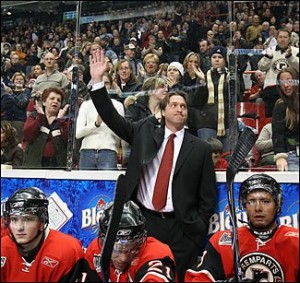Entrance video for the University of Alaska Fairbanks hockey team
This isn't news, or a feature. It's just a fun video that I saw on Twitter thanks to EugePYDK, better known as Eugene Ahn, the co-host of War Rocket Ajax, the writer of Self-Titled Eponymous, the rapper Adam Warrock, the Fake AP Stylebook and just generally a busy guy.
It's nice to see a hockey video causing so much excitement... and hey, it does so without depicting a vicious elbow to the head.
Enjoy.
Phil Kessel cost the Leafs too much
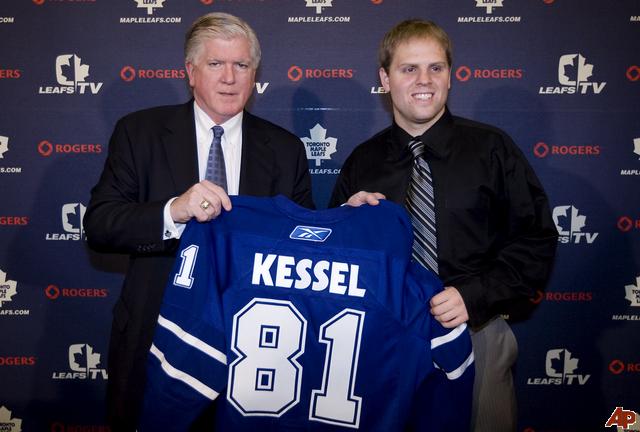 The Toronto Maple Leafs edged the Nashville Predators 4-3 Monday night, getting a late game-winning goal from young Phil Kessel, Brian Burke’s shiny acquisition, the cornerstone of the Age of Truculence.
The Toronto Maple Leafs edged the Nashville Predators 4-3 Monday night, getting a late game-winning goal from young Phil Kessel, Brian Burke’s shiny acquisition, the cornerstone of the Age of Truculence.
Since he started playing for the Leafs (about six weeks after the trade that brought him to Toronto from Boston) he has scored 15 goals and 13 assists, and is easily the best player on the Leafs.
But I think the trade has been a terrible mistake. He doesn’t have enough help on the ice, he’s not a franchise player, and ultimately, the price was too high for Toronto.
Don’t get me wrong, he is a great player. He finds open space, sees plays developing and makes intelligent decisions with the puck. He can score from anywhere in the offensive zone and demands that the other team cover him tightly, giving his teammates room to breathe.
Unfortunately, his teammates don’t seem to know what to do with that space. As a result, opposing defences have begun to take advantage of the Leafs lack of depth. They have, as defensive coaches say, begun to cheat on Kessel.
Defensive strategy relies heavily on reactive responses to an offence. Obviously, a good defence reacts to where the puck is, where the players are. But because Toronto does not have a strong secondary scoring threat, defences have taken to sealing off Kessel as soon as he’s on the ice. They know that should he pass the puck, the Leafs probably aren’t going to be able to score.
Now, there are some players who would be able to overcome that, who could make the players around them better. The kind of players that only need to be identified by their surnames: Gretzky, Lemieux, Crosby, Ovechkin, Brodeur, Roy. Unfortunately, Kessel just doesn’t belong there. He’s a very good hockey player, but his shoulders aren’t broad enough to carry an entire franchise.
And that, ultimately, is why trading two first round picks and a second round pick was too much for Kessel.
That’s an awfully high price, jeopardizing the Leafs for the next five or more years. Frankly, I’m not sure that I’d trade that much for any of the franchise players mentioned above, let alone Phil Kessel.
With the Leafs toiling near the bottom of the standings, the trade looks even worse. There’s a good chance that the division rival Boston Bruins landed themselves a top three pick that could mean Taylor Hall or Tyler Seguin, both quality players that would’ve helped the Leafs considerably, and at the rookie maximum salary instead of Kessel’s $27 million over five years.
When there were rumours that Toronto was going to trade with the Boston Bruins, that Burke might land Kessel, a proven sniper, I was ecstatic. At last, the Leafs were going to start to turn it around. Most people I knew thought that too, but my good friend Ruben and my dad both held out, saying that it was a bad trade. It took me a while, but now I see it too. Phil Kessel is a quality player, but the price the Maple Leafs paid was way too high.
The Quebec Major Junior Hockey League is definitely not soft
This video has been making the rounds Monday morning, and it’s pretty tough to watch.
At about the one-minute mark Team Canada’s world junior captain Patrice Cormier comes off the Rouyn-Noranda bench, skates through centre ice and lays out Quebec’s Mikael Tam with a vicious elbow to the head.
Ironically, of the three leagues that comprise the Canadian Hockey League, it’s the Q that has a reputation of a softer, finesse style of play that emphasizes goaltending and skilled scorers. The events of this weekend underscored the fact that this really is not the case.
According to TSN.ca: “Following the hit, Tam was convulsing on the ice before being taken off on a stretcher. Tam suffered trauma to the skull and brain and lost many teeth. He is now in stable condition in hospital and will remain under observation for at least two days.”
Although I followed the results of that game, the summary really didn’t do justice to the viciousness of that hit. After all, "Penalties: ROU - Patrice Cormier (03:32)(maj.), ROU - Patrice Cormier (03:32)(match)" isn't much of a story.
As TSN’s Bob McKenzie tweeted: “This Cormier elbow is sickening on so many levels. I have never been so discouraged about the game of hockey as now.”
The QMJHL’s Disciplinary Prefect, Raymond Bolduc, is currently investigating the incident, and the league will take action in the next day or two. I expect that Cormier is looking at some lengthy time away from the ice.
Watching the Tam video is reminiscent of Cormier’s hit in a preliminary World Junior Championship match against Sweden where he hit Sweden's Anton Rodin with an elbow and bloodied his nose.
I thought Cormier took unnecessary penalties throughout the WJC tournament, and his actions definitely hurt Team Canada’s performance in the playoff rounds.
Also on Sunday, Bolduc suspended Tommy Tremblay of the Shawinigan Cataractes for four games. Bolduc found that Tremblay had been the aggressor in a fight with the Victoriaville Tigers’ Guillaume Goulet.
The left-winger earned two game misconducts during the game, and the league tacked on another two after reviewing videotape of the incident on Saturday. Additionally, the Cataractes were fined $500.
I follow the QMJHL pretty closely, in fact, it’s my favourite junior hockey league. Although it’s not nearly as rough and tumble as the Western Hockey League, I think its physicality is under-rated.
Although line brawls (like the one that happened between the Vancouver Giants and Prince George Cougars Saturday night) are rare in Quebec, the QMJHL has its fair share of truculence.
Book Review: On Writing by Stephen King
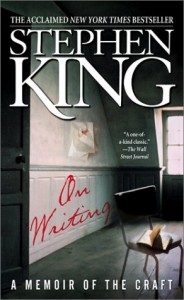 Stephen King’s On Writing is one of the best books I’ve read on how to become a writer. Not necessarily a professional scribe, but how any author can hone their craft until their work becomes readable and entertaining.
Stephen King’s On Writing is one of the best books I’ve read on how to become a writer. Not necessarily a professional scribe, but how any author can hone their craft until their work becomes readable and entertaining.
On Writing is full of King’s wit and charm as he explains how he builds his stories from the ground up. His encouraging voice is directed at fiction writers at the start of their careers, but his advice can be applied to anyone who wants to pursue their creative passion.
The book is divided into four parts: C.V., Toolbox, On Writing and then On Living.
C.V. is a short memoir that focuses on King’s life. As King says in the introduction: “This is not an autobiography. It is, rather, a kind of curriculum vitae – my attempt to show how one writer was formed,”
Some of the moments are tough to get through, particularly King’s upsetting history of drug and alcohol abuse. Fortunately, the entire section is spiked with his self-deprecating humour. Any fan of King’s work will enjoy reading this portion of the book.
Toolbox discusses the skills that every writer needs to be readable. Things like grammar, vocabulary, form and style. It’s the shortest part of the book, but still important and King, a former high school English teacher, makes it as entertaining as anyone could hope.
On Writing is the real meat of the book, where King explains how young writers should put their skills to good use. His ideas about drafting, story composition and research are all informative. In particular, I like how blue collar he is in his approach.
“[I]f you don’t want to work your ass off, you have no business trying to write well – settle back into competency and be grateful that you have even that much to fall back on,” King says in the introduction to the section.
According to King, his theories about writing and what it takes to succeed as an author are not popular with certain literary circles, but they appeal to me. Not just because it means there’s hope for the novice writer, but because I think that analyzing and honing one’s craft (whatever it may be) is the best way to succeed in any field. To see it applied to writing by one of the most widely read authors of the 20th century only confirms this.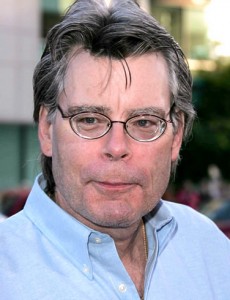
The entire tone of the book is light-hearted and informal, with King making funny asides and offering insight and commentary about his canon, as well as the work of an array of authors including Cormac McCarthy, Ernest Hemingway, Tom Wolfe, Elmore Leonard and H.P. Lovecraft.
In On Living, the book’s postscript, King recounts the events surrounding the car accident that nearly took his life during the composition of On Writing. I say ‘surrounding’ because he can’t remember the actual event – his head smashing through the oncoming windshield of a van took care of that.
It’s the most moving part of the book, and possibly the most stomach-turning writing of King’s accomplished career. His description of what happened to his body, particularly his right leg which was broken into “so many marbles in a sock”, literally had me squirming on my couch.
On Writing will appeal to two groups of people: Stephen King’s fans will be attracted to the C.V. and On Living sections where they can learn about their favourite author. Aspiring novelists will prefer the Toolbox and On Writing sections for King’s insight into his craft.
For everyone else though, it can still be a quick, fun read that will make them think twice about Stephen King and the art of writing.
Former pros should be allowed in varsity sports
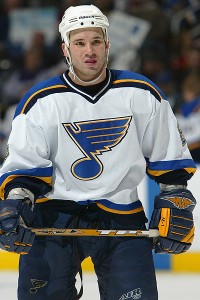
Mike Danton, formerly of the St. Louis Blues, is drawing attention to CIS eligibility rules as he joins the St. Mary's University Huskies starting this Thursday.
The Globe and Mail’s Roy MacGregor wrote an article Tuesday morning about former NHLer Mike Danton joining the St. Mary’s Huskies in which he criticized Canadian Interuniversity Sport for having eligibility loopholes that will allow the former professional to play for a university team.
MacGregor is a fantastic writer, and his heart is in the right place, but I humbly disagree. Having former professional athletes playing varsity sports does no damage to the sport, whatsoever.
For those of you not familiar with Danton’s sad tale, the CBC’s Fifth Estate has a very detailed timeline of his personal and professional life that includes links to interviews and news stories. Further, Hockey Night in Canada’s Elliotte Friedman has an excellent article on his one interaction with Danton and his agent David Frost.
In short, Danton is a 29-year-old former professional hockey player who was convicted of a murder-for-hire plot. Now released from prison, he is enrolling at St. Mary’s in Halifax to complete the degree he started while incarcerated and is going to play hockey in the CIS.
MacGregor is all for giving Danton a second chance at life, but does not think he should be allowed to play hockey with university students.
“The notion of a still-growing high school graduate challenging a mature man with three years of NHL hockey to his credit is simply preposterous,” says MacGregor.
Only, really, it’s not that dangerous. Teenagers and adults can easily play full-contact sports without any risk of injury.
After all, how old was Luke Schenn when he joined the Toronto Maple Leafs last year? What about Steve Yzerman when he became a Detroit Red Wing? Sidney Crosby? Wayne Gretzky joined the World Hockey Association because they let him play before he turned 18.
Although Danton will undoubtedly play some teenagers, most starting players on CIS hockey teams will be in their early-to-mid 20s, just like the NHL.
“As for ‘professionalism,’ the rules are mild – one year of eligibility lost for every year of pro – which still leaves Danton with two years eligibility for university hockey,” says MacGregor.
I have some hands-on experience with eligibility as the former Director of Communications for the Canadian University Field Lacrosse Association, and have dealt with issues like this.
CUFLA is an independent league that has 12 member teams from Ontario and Quebec. The league’s eligibility rules line up those of the CIS, including allowing active professional athletes from the National Lacrosse League to join teams.
What’s the logic? Simple. CUFLA plays field lacrosse, while the NLL is indoor lacrosse. Although many of the skill sets are the same, the field of play is completely different, much of the equipment is different and many of the rules are different.
The pro lacrosse players that end up on these teams act as role models that improve the level of play on the team and often serve as leaders during games and in the locker room.
What kind of effect Danton has on his Huskies teammates is anyone’s guess. Honestly, Danton is not in a position to serve as a positive example to the young players at St. Mary’s, but he could have some useful advice for them or at the very least serve as a cautionary tale.
Danton will probably be one of the best players on his team, if not all of CIS, but that doesn’t mean he should be banned from playing.
His inclusion on the St. Mary’s Huskies is not going to start a flood of NHLers joining collegiate teams. Teams are not going to be able to load their teams with ringers because there are rules that restrict scholarships as well as academic standards that guarantee the purity of the varsity game.
Frankly, today’s professional athletes have so much earning power that there is not much a university or college could offer them except tuition incentives. And really, if you could potentially earn millions per year, is a few thousand a year and mandatory class that exciting? I doubt it.
The only other player to downgrade from the NHL to CIS was Jared Aulin. Ever heard of him? No? That’s because his impact was minimal. University hockey survived that experience just fine, and I am sure that it will continue to thrive with Mike Danton playing a couple of years of hockey.
Citizen Kane Syndrome
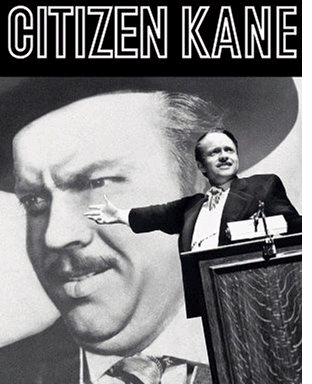 According to the American Film Institute, Citizen Kane is the greatest movie ever made, but when was the last time you saw it on TV? Only high-brow movie channels like Turner Classic Movies or maybe Bravo! will show it, and likely not very often. You’ll never see it as a Fox Saturday matinee or as part of Peachtree’s weekend movie marathon.
According to the American Film Institute, Citizen Kane is the greatest movie ever made, but when was the last time you saw it on TV? Only high-brow movie channels like Turner Classic Movies or maybe Bravo! will show it, and likely not very often. You’ll never see it as a Fox Saturday matinee or as part of Peachtree’s weekend movie marathon.
Why is that? It’s indisputably great, having influenced just about every film made after it and changing the way people saw cinema. But plunk your average movie-goer down in front of Orson Welles’ opus, they’ll likely fall asleep or try switching the channel.
This is what I like to call Citizen Kane Syndrome.
CKS afflicts many movies, but Citizen Kane has all the symptoms: an older, influential work that has become a fixture in culture. It lost its lustre because of its cultural significance.
Contemporary viewers don’t enjoy it because they’re already familiar with many of the artistic touches that made the film brilliant.
Most people don’t realize it but Citizen Kane was the first film to show the ceiling in a room. It’s true. Cameras had never been canted to such a degree that the roof was visible – until 1941 when Citizen Kane came out. It was the first movie to use deep focus throughout. It was pioneered special effects make-up. And on and on.
At the time, these were exciting new narrative techniques. Today? Mehn.
There are countless other aspects of the film that, at the time, were revolutionary, but today are taken for granted.
And, really, how thrilling can a plot twist be when Rosebud’s identity is revealed in a spoof on Tiny Toons?
It happens in every corner of pop culture too.
Stan Lee and Jack Kirby’s incredible run on Fantastic Four launched the Marvel Age. But some of its magic has been lost as the medium and craft have built upon that foundation.
The Beatles were once bigger than Jesus, but now fans of rock music expect faster beats, more complex chords and higher production values.
In Cold Blood remains a chilling look at two murderers, but its impact as creative non-fiction is not what it once was, since the New Journalists (and the New New Journalists, for that matter) have followed Truman Capote’s lead.
CKS forces media consumers into the tricky position of having to consider the historical context of the art not just politically or economically, but creatively as well. This can be a taxing requirement, and it only takes away from the viewing experience.
At the same time, there are some films, books and bands which remain timeless. Shakespeare is the easy example, but the Wizard of Oz (the movie, not the novel) also comes to mind.
My weekend, in the form of junior hockey stories
Friday, Jan. 8th 2009:
QMJHL: Remparts top Baie-Comeau, give Roy 200th coaching win:
Patrick Roy has waited a long time for his 200th victory as the coach of the Quebec Remparts.
Antoine Tardif stopped 26 shots as the Quebec Remparts smashed the Baie-Comeau Drakkar 6-0 in Quebec Major Junior Hockey League action Friday night. (Read more...)
OHL: Jenner scores OT winner as Oshawa beats Peterborough
Boone Jenner knew how to cap off a thrilling game for the Oshawa Generals.
Jenner scored short-handed, 2:27 into overtime, to lift Oshawa to a 4-3 win over the Peterborough Petes in Ontario Hockey League action Friday night. (Read more...)
WHL: Warriors ruin “Eberle and Teubert Day” for Pats
Friday may have been "Jordan Eberle and Colten Teubert Day" in Regina, but it wasn't their night.
The Moose Jaw Warriors thumped Eberle, Teubert and the Pats 5-2 in Western Hockey League action Friday, putting a damper on the festivities. (Read more...)
Saturday, Jan. 9th 2009:
QMJHL: Roy, Cape Breton shut out Halifax
Olivier Roy is moving up in the Quebec Major Junior Hockey League record books.
Roy made 31 saves as the Cape Breton Screaming Eagles blanked the Halifax Mooseheads 2-0 Saturday night. (Read more...)
OHL: Kadri scores shootout winner in wild game
The London Knights barely survived a wild night against the Erie Otters.
Nazem Kadri scored in the shootout as the London Knights outlasted the Erie Otters 8-7 in Ontario Hockey League action Saturday night. (Read more...)
WHL: Borrowed goalie can’t get Prince George past Seattle
Even bringing in some help from the Everett Silvertips couldn't help the lowly Prince George Cougars.
Charles Wells scored twice and added an assist to lead the Seattle Thunderbirds to a 4-1 win over Prince George in Western Hockey League play Saturday night. (Read more...)
Sunday, Jan. 10th 2009:
QMJHL: Martel wins 223rd game as Chicoutimi downs Baie-Comeau
Richard Martel is now the winningest coach in Chicoutimi Sagueneens history.
Antoine Roussel scored twice as Chicoutimi sank the Baie-Comeau Drakkar 4-3 in Quebec Major Junior Hockey League action Sunday afternoon. (Read more...)
OHL: Wolves score five in second period to down Generals
The Sudbury Wolves used the Oshawa Generals to rebound from Saturday night's loss.
Eric O'Dell and Eddy Leitans-Rinke both scored twice as part of a five-goal second period, leading the Sudbury Wolves to a 7-4 win over the Oshawa Generals in Ontario Hockey League play Sunday night. (Read more...)
Notes:
I thought that this was a very interesting week in the Canadian Hockey League.
As usual, the play on the ice was exciting, but there were also a lot of quirky things going on during the games.
First of all, from Saturday’s OHL report, the London Knights/Erie Otters match-up must have been incredible to watch. I assume that the London crowd was silenced when Erie scored five (!) unanswered goals to force extra time.
Unfortunately, we didn’t have it on TV in the sports department, and we didn’t have a stringer at the game. Otherwise, I would have been able to have an even more interesting story, because the game score indicated that Erie’s last two goals were empty-netters, including one on the power play.
That’s right, according to the game sheet, London pulled their goalie when they were up by two. You can imagine how much this confused me from my cushy seat at the Canadian Press.
Since then, the game sheet has been fixed to show them as even-strength goals.
Saturday night was also interesting in the WHL, with Prince George borrowing a goalie from the Everett Silvertips. The Cougars had been rolling with only one goaltender on their roster for a t least a week, so I suppose it was inevitable that they’d need an extra ‘keeper.
I’m just 26, but I’ve never seen that happen in an organized hockey game before.
With the junior hockey trade deadline on Monday there was also a lot of action off the ice with players changing teams. I mentioned this on Twitter, but the Chicoutimi Sagueneens have traded away many of their best players including Jacab Lagace and Nicolas Deschamps. As far as I can tell, the Sags are preparing for the 2010-11 season.
Obviously, the QMJHL stories from Friday and Sunday were naturals as round-up toppers. First of all, you can’t go wrong talking about Patrick Roy. He’s easily one of the top three goalies, ever, and he’s probably going to become an NHL coach within the next three years.
Then you have Richard Martel becoming the winningest coach in Sagueneens history. He’s one of the great coaches in the QMJHL and deserves accolades for his 223rd victory. However, as a writer/editor I also knew that with Chicoutimi in the midst of a firesale they likely won’t be at the top of a round-up any time soon.
Also, I’m not sure how much longer I could resist calling Martel a “model” to his players.
One other thing to note: I did not write any WHL stories on Sunday because my shift would have been seven or eight hours long. Instead, one of my co-workers wrote it. You can see it here: WHL: Reddick nets two goals as Americans blank Bruins.
What does a Junior Hockey Editorial Assistant do, exactly?
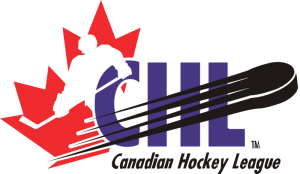 As I’ve mentioned on my bio page, I work at the Canadian Press as a Junior Hockey Editorial Assistant. (The Junior denotes the level of play, not my position.) It’s a really fun job that lets me pursue two of my loves: writing and following sports.
As I’ve mentioned on my bio page, I work at the Canadian Press as a Junior Hockey Editorial Assistant. (The Junior denotes the level of play, not my position.) It’s a really fun job that lets me pursue two of my loves: writing and following sports.
It’s also nice because at parties people get all excited about what they assume is an exciting, glamorous job.
Inevitably, they ask me how it all works. I figured I would break it down for my readers.
Every Friday and Saturday night I go to CP’s newsroom for about 9 p.m., just as the Quebec Major Junior Hockey League’s games are wrapping up.
Covering the QMJHL is very straight forward.
All I need to do is create a “round-up” from their website’s detailed game sheets. As long as no games are postponed or go to a shoot out, I can do this in an hour to an hour and a half. Here’s one I wrote on Jan. 3: QMJHL: Martel wins 222ndgame as Sagueneens beat Remparts.
As I’m finishing my QMJHL writing results from the Ontario Hockey League will begin to trickle in.
For most OHL games, CP has freelance writers on location that we call “stringers”. Stringers email in copy that I read over, format, and then put on the wire as a 150-400 word story. We also receive copy from member papers. For example, we often get material on the Kingston Frontenacs from the Kingston Whig-Standard.
Once all the stringer and members have sent in their work, I write separates for any games that didn’t have a reporter on location. Like my QMJHL round-up, I rely on the OHL’s website for my information.
When that’s all done I cobble all the OHL stories together as a round-up. Here’s an OHL overview from Jan. 3: OHL: Bulls rally from early deficit to defeat Generals.
By this point it’s around midnight and some Western Hockey League games will be done.
The WHL is tricky because it is spread over three time zones, so I have to keep my eye on the scores page of their website constantly. Often times there will be a game in Brandon, Man., or some early games in Regina or Saskatoon that will require my attention before I’m even done the OHL.
Covering the WHL ramps-up the amount of work I have to do.
Again, I rely on stringers and members to supply me with copy for separates, and I bolt it all together to make a round-up. Here’s a lengthy one from Jan. 2: WHL: Giants win chippy game against Chiefs.
An extra wrinkle in my WHL work is that I also have to create box scores for “agate”.
What’s agate? I’m glad you asked.
Agate is defined by Wikipedia as “a unit of typographical measure. It is 5.5 typographical points, or about 1/14 of an inch. [...]. An agate font was commonly used to display statistical data or legal notices in newspapers. It is considered the smallest point size that can be printed on newsprint, and then read legibly.”
In other words, when you flip to the back of your sports section and look at all the box scores and standings, you are looking at agate. The standings of all three leagues are updated in agate, but the WHL has individual box scores done in agate as well.
The WHL is the most involved of the three leagues in the Canadian Hockey League. It’s got the most teams, the most fans, and therefore requires the most coverage. In small towns like Prince Albert, Sask. or Kennewick, Wash., the WHL is the biggest show in town.
More often than not, the small arenas that host WHL games are sold out.
When all is said and done it is between 2 and 3 a.m. and I have written or edited between 16 and 18 separate game stories and put together three round-ups. That sounds like a lot, but it’s actually not so bad – typically between 2,200 and 4,000 words. The stories and agate appear across Canada, in parts of the United States, as well as on websites like TSN.ca.
Allow me to re-introduce myself…
Hello and welcome to John Chidley Hill.com!
As you can see in several other places on this website, I’m a sports journalist living in Toronto, Ontario and I love reading, writing, and basically everything else that pop culture has to offer. I'll be using this blog to write about all those things, particularly sports.
But why spend time every weekday to write 400+ words? Check the bullet points:
- First of all, it’s important to write every day. Just like a baseball player getting in batting practice, it’s good for me to work on my swing, whether it’s laying down bunts or jacking dingers. It keeps my work sharp and will make me a better writer.
- Also, there are many, many things that I’d like to write about that really aren’t saleable. Either their relevance is too fleeting, I’m not experienced enough to handle such a large story, or it’s something that only interests me. Trust me, no one wants to buy a 600-word feature story on why I love Booster Gold. (And if you do, you can contact me at jhm [dot] chidley [dot] hill [at] gmail.com!)
- Finally, this will be my home base as my career develops. As my portfolio grows, I’ll provide links or other information on where my writing can be found.
Anyway, enough of this introduction. Time to get down to business.
I hope you enjoy this site. I know I will.
- John
